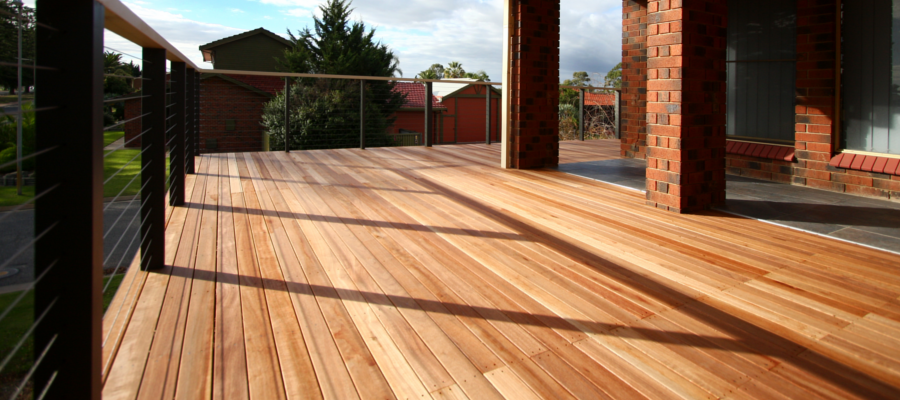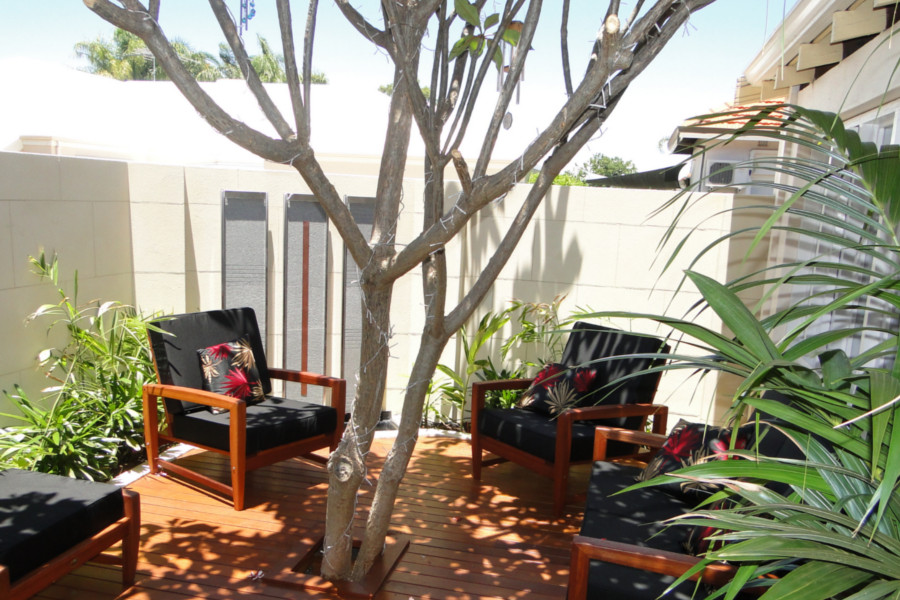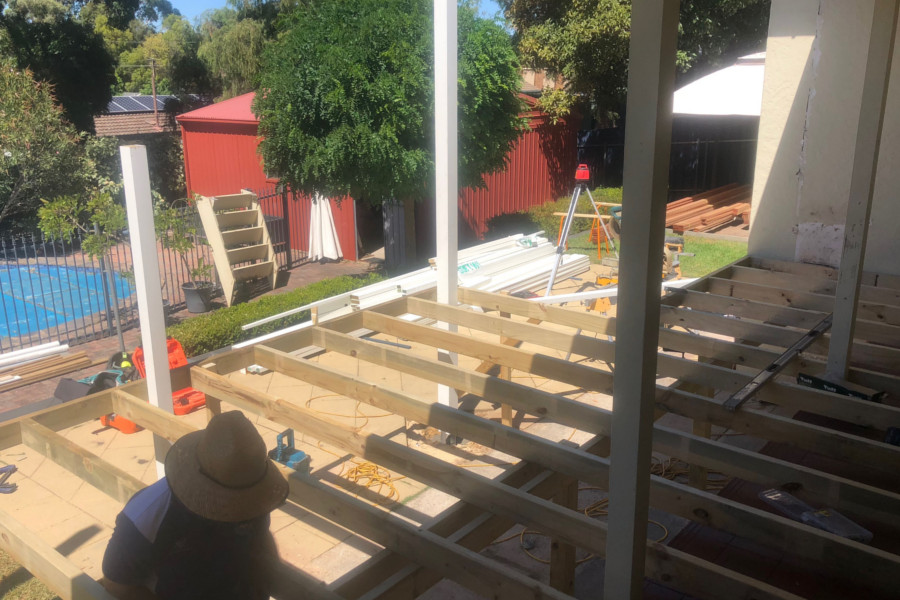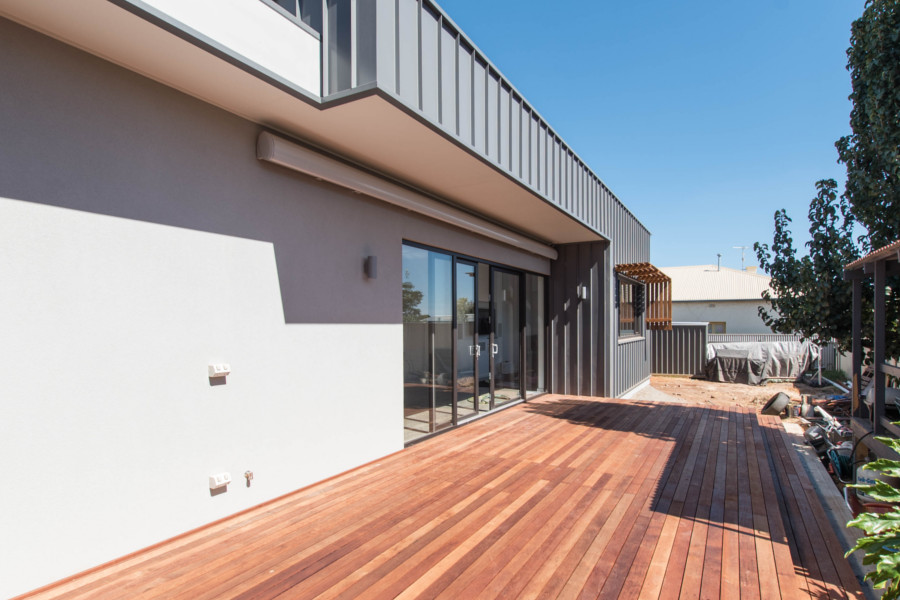
Your timber deck is a great place to sit in the sunshine, enjoy al fresco meals and relax with your friends and family, so it follows that you want to keep it protected and in good condition. Weather extremes such as cold, rain, wind and sunlight can take their toll on your deck, causing the timber to weather, discolour, warp and weaken.
In investigating and getting a good idea of how and why decking timber is negatively affected by the weather, I did some research and have decided that in order to know why we need to protect a deck we first need a basic understanding of what is happening when timber weathers
Generally speaking, timber consists of a number of substances, primary amongst them are cellulose, hemicellulose and lignin. These are bonded together at a cellular level and their relative levels and properties (among other things) determine the density and strength of the timber.
Cellulose and hemicellulose are both relatively soft and are found together in the cell walls with lignin, forming what are known as microfibrils. Lignin is the part of the cells that is thought to be responsible for limiting the absorption of water as well as providing strength to the timber.
When timber is exposed to the sun for long periods of time without protection the UV rays degrade the lignin and in doing so weaken the structure of the cells and their bonds to each other. This allows the cells to break away from one another resulting in cracks in the timber or weakened bonds between cells that will further degrade with more weathering or wear.
Water has a different but no less destructive effect on timber. When saturated by water the cell walls of timber become softer. This is because the hydrogen bonds between cellulose and other elements in the cells of the timber are weaker than those that can form between cellulose and water. When the cell bonds are broken and the timber inevitably dries out again you are left with timber that has less strength than previously.
When these weathering issues occur they are intensified by the natural expansion and contraction of the cells due to exposure to heat and cold.
It should be noted that treatment of timber goes a long way to eliminating these problems, especially as it relates to the effect of water. It’s also worth noting that these changes rarely happen quickly, and most decking timber can be exposed to the weather for some time before it degrades.
So the question remains, how can you protect your timber deck from the elements and make it last as long as possible? Here are three things that will protect your decking from whatever Mother Nature decides to throw at it:
Keep it Sealed
Your deck needs to be protected with a sealant or stain, which will help to safeguard the timber against water exposure and sunlight. There are many different stains, oils, paints and sealants on the market that are designed for protecting decking, we recommend the intergrain range due to their superior performance and wide array of colours. You can choose a colour to fit the look you prefer.
Of course, your decks stain, oil or sealant will not last forever and will need to be reapplied about once or twice per year. This is a very quick and easy process and is well worth your time to keep your deck looking great. The amount of time that passes between coats is determined by the product you choose. If you go with a clear oil for instance, your deck will look great, but will need far more maintenance in terms of quarterly re coating. This is another reason that we recommend intergrain as their products provide the optimal results in terms of looks and longevity.
Allow for ventilation
When you build your deck you should take into consideration the fact that your timber will be healthier if you leave a decent gap between your decking boards. This allows for airflow below and between your decking boards and prevents any mould or mildew from growing. It also allows the timber room to expand and contract, as well as preventing any pooling of water on the surface of the deck.
If your decking expands further than you had expected and you find that water is pooling you can solve the problem by drilling a hole in between two boards at the deepest part of the water so that it might drain off and not degrade your timber. We recommend that you leave at least 5mm between decking boards to allow for your decks good health
Cover It
One step that will do more than any other to ensure your decks longevity is to provide cover for the area that the deck is built. If you add a pergola, verandah or a roof over your decking you will likely dramatically reduce the possibility that your deck will be negatively affected by the weather.
With some cover over your deck you will reduce the amount of direct sun that your deck will see as well as limiting the amount of water that might come to rest on your deck. A structure above your deck will also limit the amount of sweeping of your deck that you’ll have to do, as well as allowing your family to enjoy the outdoors no matter the weather. You can also add fans, heaters and lighting to ensure that the space is comfortable in all conditions.
If you have any questions or are interested in building a deck of your own please get in touch, we can help you through every step of the process and provide you with a kit at a great price, no matter where you live!



